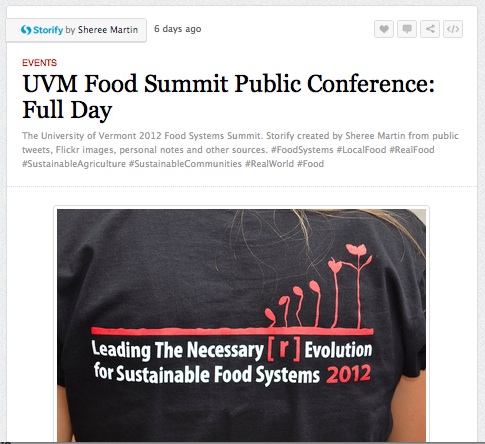 Republished from the original article posted on Examiner.com by Rachel Greenberger. Rachel received her MBA from Babson College in May 2011 with a concentration in food-system innovation. In August 2011, she and Cheryl Kiser launched Food Sol (short for Food Solutions Institute) at Babson College, an action tank for food entrepreneurs of all kinds who are contributing to a brighter food future. Rachel writes on food-system dynamics and Boston local food for Examiner.com and leverages social media to share and learn. (Twitter is her preferred platform for idea swapping. She tweets from @businessforfood.) Before business school, Rachel worked for two international adventure travel companies. She has observed a range of food cultures across the globe and sees America’s hunger for a return to community, culture, and connection through food.
Republished from the original article posted on Examiner.com by Rachel Greenberger. Rachel received her MBA from Babson College in May 2011 with a concentration in food-system innovation. In August 2011, she and Cheryl Kiser launched Food Sol (short for Food Solutions Institute) at Babson College, an action tank for food entrepreneurs of all kinds who are contributing to a brighter food future. Rachel writes on food-system dynamics and Boston local food for Examiner.com and leverages social media to share and learn. (Twitter is her preferred platform for idea swapping. She tweets from @businessforfood.) Before business school, Rachel worked for two international adventure travel companies. She has observed a range of food cultures across the globe and sees America’s hunger for a return to community, culture, and connection through food.
“Last Thursday’s food systems summit had me at Hello: the title, the line-up, the format (15-minute rapid-fire sermons from food fighters across a range of issues and constituencies).
But you know a conference is extraordinary when you are not even in the room for it and it shifts your lens on the world – on your world, the business and sector and material you work with all day, every day.
Organized into an expansive, six-day convening at University of Vermont, The Necessary (r)Evolution for Sustainable Foods Systems Summit was a nearly six-hour event. Truth be told, when I noted its length, I figured I’d just listen in for a bit (hear the same-old, same-old), find the livestream tedious, and tune out – except for the talks of my known food heroes Stephen Ritz of Green Bronx Machine (like them on Facebook – it makes the kids happy!) and David Schwartz of Real Food Challenge.
Six hours later, my eyeballs still super-glued to the screen, I had acquired a whole new slew of food heroes – with LaDonna Redmond leading the charge, having nearly knocked me off my kitchen chair.
Why? Well, beyond the food (r)evolution’s need for prevalent, actionable systems-thinking (most food fighters understand this by now), we desperately need a surfaced recognition of the meta-values baked into our food decisions.
Why do we eat what we eat? What are our food cultures, communities, connections, and contexts that drive us to do what we do in spite of reams of data, marketing, and pretty theory?
Food meta-values include (but are not limited to): love, life, family, culture, history, freedom, identity and taste – transparent, omnipresent forces that have controlled our food evolution since long before health, sustainability, politics, and supply chain came into focus.
The speakers acknowledged these meta-values. Each packed so much passion and punch into his/her 15-minute talk that calling them “sermons” is only partial hyperbole. Each delivered the power, precision, and persuasion of an effective orator: eliciting fierce focus, coursing-through-your-veins truth, and a sense of duty to convert compassion to action .
At least this is the effect they had on me – and food systems are my business.
And, again, I wasn’t even in the room.
Though when they reconvene next year, I will make sure to be.
Watch all 15 of the talks (Governor Peter Shumlin was a last-minute addition)- and the excellent moderation by UVM interim President John Bramley – and judge for yourself. Link will be posted soon. Check back for updates.”














